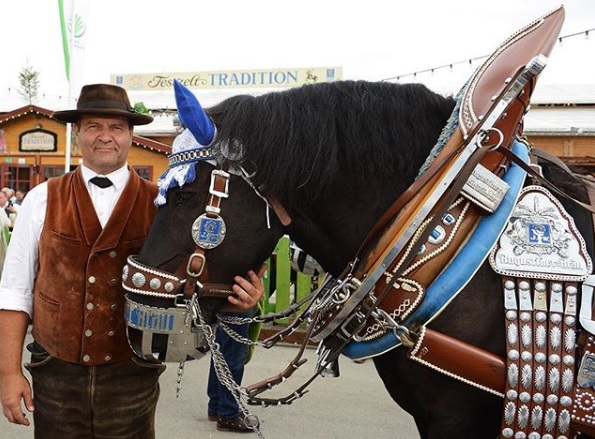Octoberfest 2019 comes to an end this Sunday after three weeks of beer, carnivals and food. In many ways our first trip there this year was a great learning experience that banished both all the preconceptions we had about the event as well as any money we had left in our bank accounts.
Here are ten things we didn’t know about Octoberfest before we went:
It’s not called Octoberfest
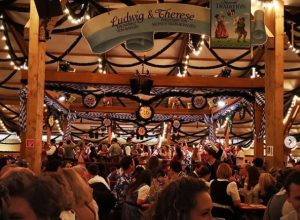
Apart from on the sign at the entrance, almost no one in Germany calls it Octoberfest. The festival is actually known as Wiesn, which translates as meadow, but traditionally refers to the fairgrounds where the festival is held – a shortened form of Theresienwiese.
This is due to the fact that the festival was initially established as way to honour the marriage of Ludwig von Bayern, the King of Bavaria, and his princess Therese von Sachsen-Hildburghausen in October 1810. That’s right, the festival is so old that back when Shaka Zulu was waging war through Kwa-Zulu Natal, people were already drinking at Octoberfests.
It doesn’t start in October
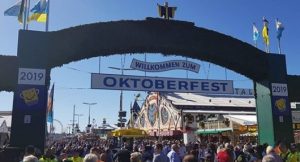
Mainly though Octoberfest is not known as Octoberfest in Germany because it does not start in October. While initially most of the festival did take part in the solidly autumn month there have been moves over the years to shift it earlier and earlier into September, for more dependable good weather.
In 2019 the festival started on Sat, 21 Sep and ran until Sun, 06 Oct 2019 when it was brought to a close by twelve riflemen sounding a salute on the steps of the Bavaria Statue.
It’s not just a beer festival

Wiesn is more than just a beer festival, and while the enormous central tents form the backbone of the event there is a lot more to do. The area of the festival is filled with carnival games, rides, and food stalls, which might actually make up the majority of the time you spend wandering the area.
This all makes the event surprisingly child and family-friendly. Even inside the massive beer halls children are welcome and in some, particularly in the Oide Wiesn (Old festival), they are even encouraged to get up and dance on the stages.
Wiesn is a traditional festival at its heart, and local families will make a day trip out of going to ride the dodgem cars and eat the traditional food snacks, sometimes even without touching a single beer.
You don’t have to wear Tracht, but it helps
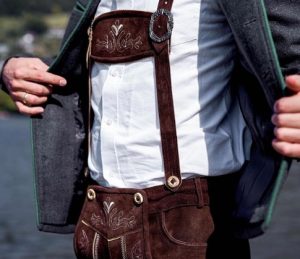
Everywhere you go at fest you will see locals and tourists alike decked out in traditional clothing, collectively known as “Tracht”.
The men’s clothing which includes leather knee-length shorts called Lederhosen, and the women’s a fusion of bodice, blouse, full skirt and apron called a Dirndl have been finding increasing favour at the beer fest. Two decades ago many people had abandoned the traditional clothing, which dates back to the 1600s, but they are making a comeback with a vengeance among the modern festival attendee.
These outfits used to signify the different classes of people in Bavarian society, with the hairier, bushier hats, indicating the most wealthy, but now they primarily serve to uphold a sense of regional custom at large events.
There are no rules around who can wear them or how they can be worn so you can happily feel no shame at all buying yourself a set for your visit to fest. A tip though; get them from Amazon or similar before you go as buying them in Germany during fest can be extremely pricy.
The waiters are freakishly strong
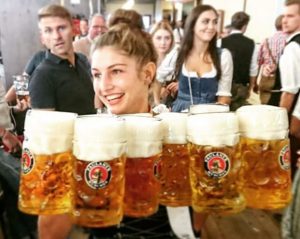
A litre of beer in the common glass mugs weigh around 2.4kgs each, and waiters at the beer fest will carry a stack at a time back and forth between the bar and various tables all day from the opening at 10 am till closing just before midnight.
It is not uncommon to see a waiter casually lift six steins in each hand to ensure the frothy beverage reaches their clients as quickly as possible, and the average waiter at Wiesn will walk roughly 20kms a day.
In 2017, Oliver Strümpfel set the current world record for glass stein carries, somehow managing a massive 29 beer steins through a busy tent at the Gillamoos fair in the Bavarian town of Abensberg. He had initially gone for 31, but one stein fell and another lost more than 10 percent of its beer. Twenty-nine steins of beer weigh about 70 kilograms.
Six breweries are responsible for all the beer
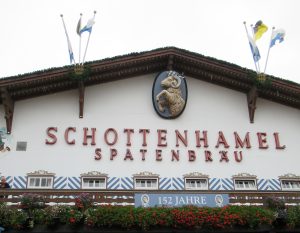
Just six breweries, all located within the Munich city parameter are responsible for the beer consumed at Octoberfest. Augustiner, Hacker-Pschorr, Hofbräu, Löwenbräu, Paulaner and Spaten are responsible for the roughly 8-million litres of beer that were consumed by about 6-million guests in 2019.
To quote one festival-goer, breweries have weaponised beer drinking. In many of the tents, the taps are literally never switched off, and glasses are simply passed under these constantly running waterfalls of beer as thousands of thirsty people need to be served their beverages. It is said that experienced bartenders need a mere 1.5 seconds to fill a mass (litre stein).
You only drink one kind of beer
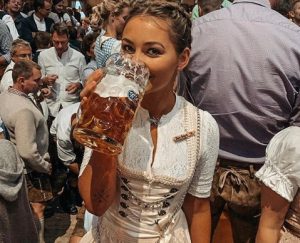
Some travel sites mention ales, lagers and stouts on sale, but this is entirely a misnomer. Despite being called a beer fest, and having six whole breweries in attendance the only beer available is “Festbier”. This traditional beer is, like lager, bottom-fermented, but unlike lager is often over 6% alcohol. Each of the breweries makes their own batches specifically for Octoberfest, and its these that will be served to you in the one-litre glasses.
In case you need someone to do the maths one litre of beer at 6% means each glass contains 60ml of alcohol, the equivalent alcohol volume of five 30ml shots of tequila. It’s therefore probably unsurprising that each year the red cross tent at the festival deals with between 600 and 800 people suffering from alcohol poisoning.
You can always have that festival beer diluted 50/50 with lemonade in a drink the locals call Radler.
The most common song isn’t even Bavarian
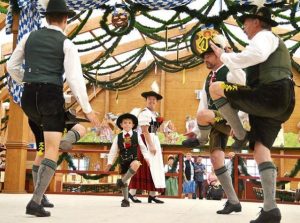
“Ein Prosit der Gemütlichkeit” is a song that plays at numerous times in each of the beer tents and is lustily sung along with by the crowd who all toast one another at the end before drinking a sip. If you intend on going it is highly advised you learn the lyrics to this song, which while sounding traditional is in fact not even Bavarian.
The track was written by parttime musical hobbyist Bernhard Traugott Dietrich, who was from the North-eastern German city called Chemnitz and was only popularised at fest by the festival host Georg Lang in 1898.
While there is no direct translation to English the lyrics roughly translate to mean:
“A Toast”
A toast, a toast
To cheer and good times
A toast, a toast
To cheer and good times.
You get thrown out for downing a beer
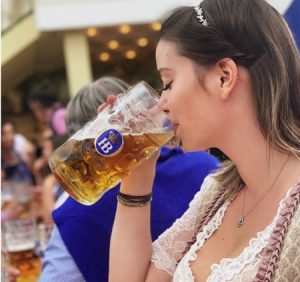
It might sound counter-intuitive to people who think the festival is about beer, but downing one of the massive beverages in one go is likely to get you thrown out of your beer tent, or at least sent to the cooler outside for 20 minutes. This is because of the spectacle it causes as people around you start chanting and going wild.
While Wiesn organisers are naturally expecting drunkenness, they still want a lot of that German order and crowds cheering drunks on for downing is not in the family spirit of things. Likewise, you should feel free to stand on the tables to watch the entertainment, but the second you start dancing on them you can expect a quick escorted trip to the exit.
Einstein once worked at the fest
Albert Einstein was a qualified electrician and helped set up one of the beer tents in 1896.


